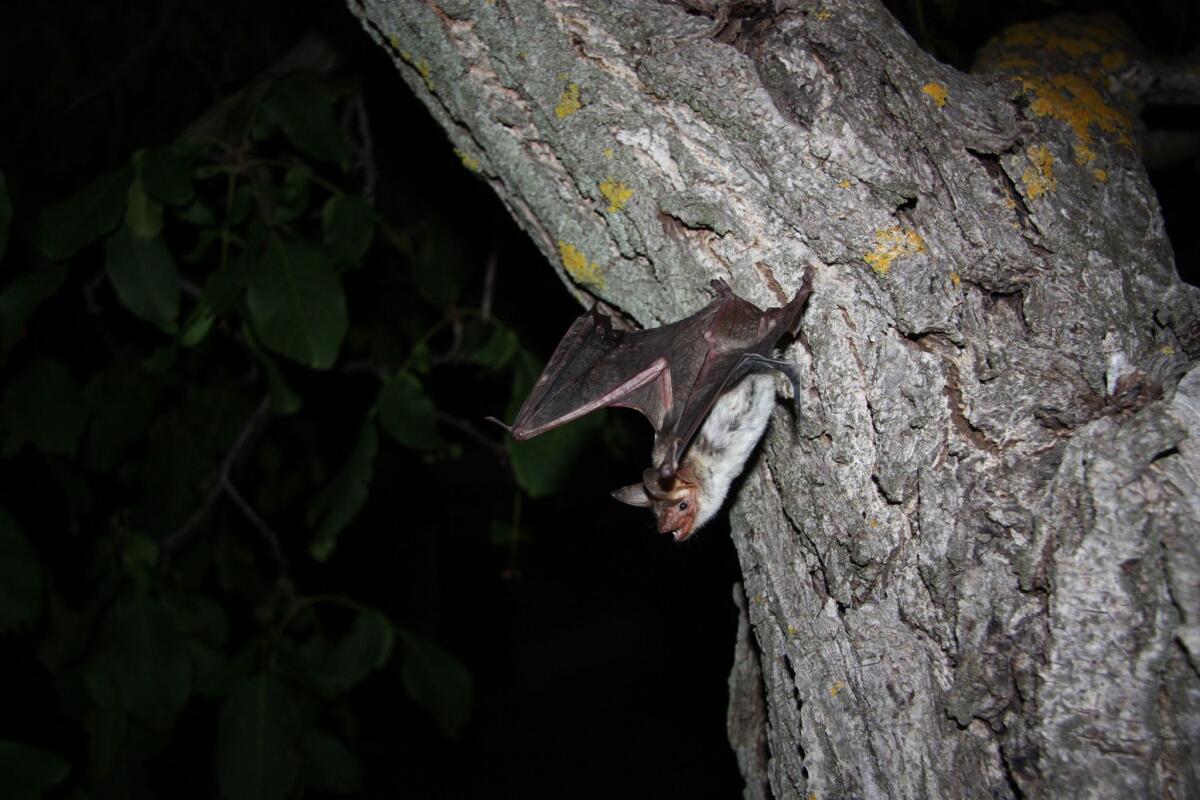Polarized light helps not-so-blind bats find their way at dusk

Bats are famous for using echolocation to navigate in the dark of night--sending sound into the environment and using the resulting echoes to locate prey and avoid obstacles.
But echolocation only works in a limited range, between 16 and 160 feet. For longer-term navigation bats must rely on a suite of cues including what they can see (despite the phrase “blind as a bat”), the Earth’s magnetic field and -- according to a new study in Nature Communications -- patterns of polarized light in the sky at dusk.
These patterns of light are not visible to the human eye, but they help a whole slew of animals calibrate their internal compasses. Many invertebrates use it. So do birds, reptiles and amphibians. However, there was no evidence that mammals used polarized light to help with their navigation until now.
So what is polarized light exactly?
“When light passes through the atmosphere it gets scattered and becomes polarized,” meaning that all photons going in one direction oscillate in a preferential plane, explains Stefan Greif of the Sensory Ecology Group at the Max Planck Institute for Ornithology in Germany. “Depending on your viewpoint and angle to the sun, it is refracted more or less in certain areas of the sky and thus creates a gradual pattern in the sky.”
The highest degree of polarized light is always in a semicircle 90 degrees away from the sun. At sunset when the bats come out of their caves, this band of polarized light stretches like a rainbow from north to south.
Greif and his colleagues hypothesized that bats use polarized light to help them calibrate an internal magnetic compass, which they use to help them figure out where they are. To find out, Greif, the lead author of the paper, and his colleagues gathered 70 adult female greater mouse-eared bats and put each one in a specially constructed box with windows so the bat could see out. The windows were covered with filters that manipulated the natural polarization pattern in the sky.
As the sun set, some of the bats were exposed to normal polarization patterns out their windows; others were exposed to a polarization pattern that was shifted 90 degrees. Then they were released.
The researchers report that on average, the bats who had their polarized light exposure manipulated flew home 90 degrees in both directions from the control group.
“Polarization doesn’t give you a specific direction,” like the magnetic field indicating which way is north and which is south, said Greif, “so the bats who were confused disappeared either 90 degrees left or 90 degrees right.”
Now that it has been established that bats respond to changes in polarized light, scientists’ next task is to figure out what the mechanism is that allows bats to perceive polarized light in the first place.
For more amazing science news, follow me @DeborahNetburn







